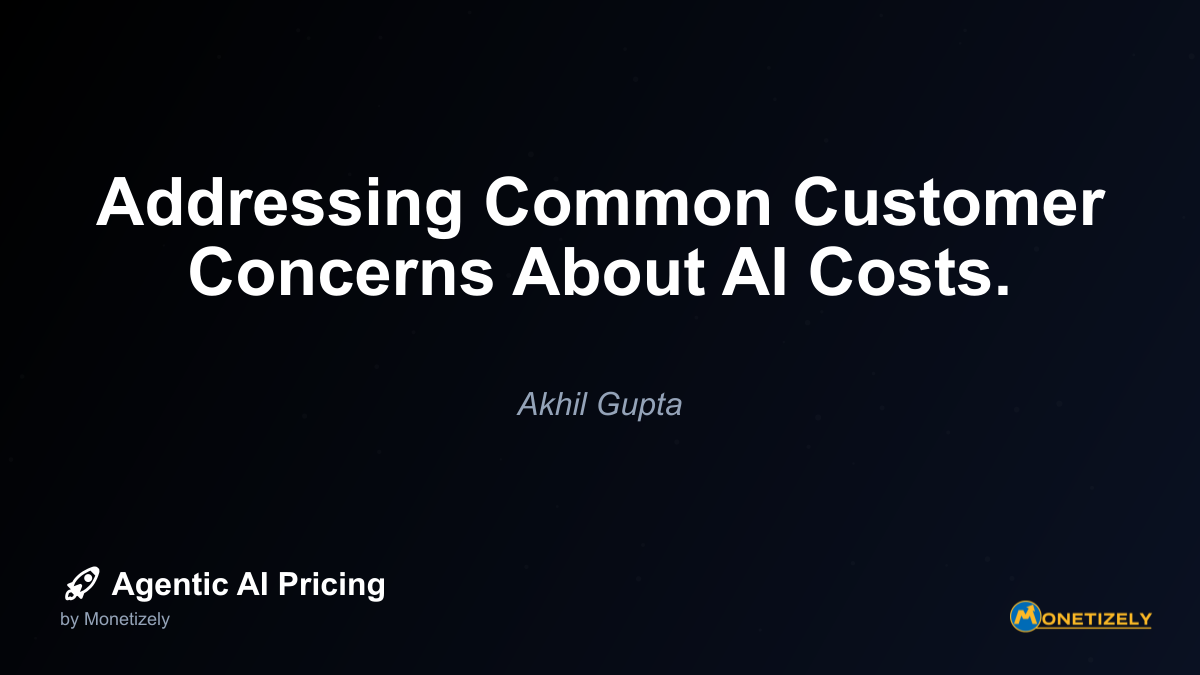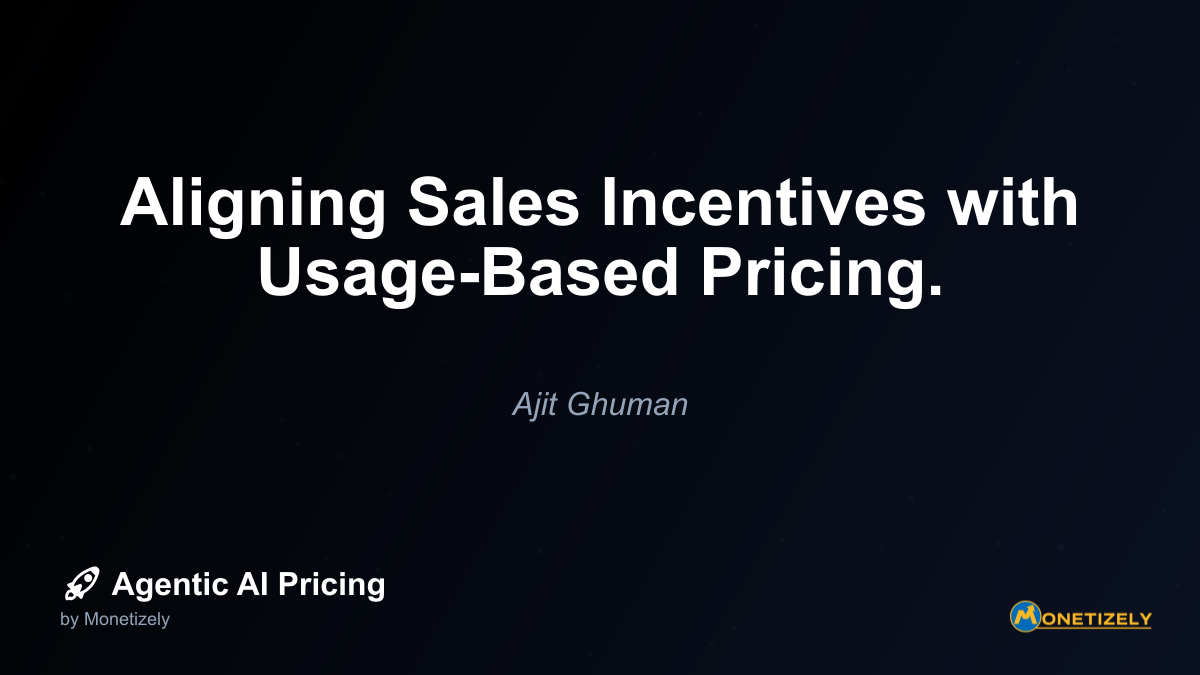· Akhil Gupta · Best Practices · 6 min read
Standing Out: Using Pricing Strategy as a Competitive Differentiator.
AI and SaaS Pricing Masterclass
Learn the art of strategic pricing directly from industry experts. Our comprehensive course provides frameworks and methodologies for optimizing your pricing strategy in the evolving AI landscape. Earn a professional certification that can be imported directly to your LinkedIn profile.

How to Implement Differentiated Pricing Strategies
Transforming your pricing into a competitive differentiator requires a methodical approach that balances customer needs with business sustainability. Here’s how to implement innovative pricing that sets your AI solution apart:
1. Understand Your Customers’ Value Perception
Before redesigning your pricing, conduct in-depth research to understand how customers perceive value in your solution:
- Interview existing customers about their ROI calculations
- Survey prospects about their pricing pain points with competitive solutions
- Analyze usage patterns to identify value inflection points
- Study customer success metrics to understand outcome priorities
This research forms the foundation for pricing models that directly address customer value perception gaps in the market.
2. Analyze Competitive Pricing Landscapes
Differentiation requires understanding the status quo you’re disrupting:
- Map competitors’ pricing structures, not just their price points
- Identify rigidity points in competitive models that cause customer frustration
- Look for unaddressed customer segments excluded by current pricing approaches
- Analyze customer acquisition costs and lifetime value calculations in your industry
This analysis reveals opportunities for meaningful pricing differentiation that competitors haven’t exploited.
3. Design Your Differentiated Model
With customer and competitive insights in hand, design your pricing approach:
- Create clear value metrics that align with customer outcomes
- Develop tracking and measurement systems for performance-based components
- Structure tier boundaries based on natural usage patterns
- Build financial models testing various scenarios and customer behaviors
The key is ensuring your pricing structure itself communicates your value proposition and competitive advantages.
4. Test Before Full Implementation
Innovative pricing carries implementation risks that require testing:
- Run pilot programs with select customers to validate assumptions
- Create side-by-side comparisons of traditional vs. innovative pricing
- Develop financial guardrails that protect against extreme scenarios
- Gather qualitative feedback about how pricing influences purchase decisions
Testing reveals not just financial impacts but also how effectively your pricing communicates your intended differentiation.
Communicating Pricing as a Differentiator
Even the most innovative pricing model fails as a differentiator if prospects don’t understand its advantages. Strategic communication is essential:
Pricing Page Design
Your pricing page should do more than list prices—it should tell the story of why your pricing approach benefits customers:
- Highlight risk reduction elements with visual cues
- Use comparison tables that showcase flexibility advantages
- Include testimonials specifically about pricing satisfaction
- Provide interactive calculators that demonstrate value alignment
The goal is making pricing a positive part of the sales conversation rather than a necessary evil at the end of the process.
Sales Team Enablement
Your sales team needs specific training to position pricing as a competitive advantage:
- Develop clear talking points about pricing differentiation
- Create comparison tools showing total cost of ownership advantages
- Train on objection handling specific to innovative pricing models
- Build ROI calculators that incorporate your unique pricing approach
Sales representatives should view your pricing structure as a selling point rather than an obstacle to overcome.
Marketing Integration
Marketing materials should explicitly highlight pricing as a differentiator:
- Create case studies focused on pricing satisfaction
- Develop content explaining the philosophy behind your pricing approach
- Use competitive comparison content that highlights pricing advantages
- Position pricing innovation in thought leadership content
This integrated approach ensures pricing becomes a recognized part of your brand’s competitive advantage.
Measuring the Impact of Pricing as a Differentiator
To validate that your pricing strategy functions as a meaningful differentiator, establish clear metrics:
Customer Acquisition Metrics
- Conversion rate changes after implementing innovative pricing
- Percentage of prospects citing pricing as a decision factor
- Win/loss analysis highlighting pricing influences
- Time-to-decision changes with new pricing models
Customer Relationship Metrics
- Expansion revenue under flexible models
- Churn rate comparison between pricing approaches
- Customer satisfaction scores specifically for pricing
- Usage pattern changes under new pricing structures
Financial Performance Metrics
- Gross margin impact of innovative pricing
- Customer acquisition cost changes
- Customer lifetime value adjustments
- Revenue predictability improvements
These metrics provide concrete evidence of pricing’s impact as a differentiator and guide ongoing refinements.
Potential Challenges and How to Overcome Them
Innovative pricing approaches come with implementation challenges that require proactive management:
Revenue Predictability
Challenge: Outcome-based and consumption models can introduce revenue variability that complicates financial planning.
Solution: Implement minimum commitments, develop sophisticated forecasting models based on usage patterns, and create hybrid approaches that balance predictability with flexibility.
Operational Complexity
Challenge: More sophisticated pricing models often require more complex billing systems and customer success tracking.
Solution: Invest in pricing management software, develop clear internal processes for tracking value metrics, and create cross-functional teams responsible for pricing implementation.
Customer Education
Challenge: Innovative pricing may require customers to learn new evaluation methods and ROI calculations.
Solution: Develop educational content explaining your pricing approach, create simple comparison tools, and train sales teams to guide customers through the evaluation process.
Internal Resistance
Challenge: Sales teams accustomed to traditional pricing may resist models they perceive as more difficult to sell.
Solution: Implement commission structures that reward innovative pricing adoption, provide extensive training and talking points, and create early success stories to demonstrate effectiveness.
Future Trends in Pricing Differentiation
The evolution of AI capabilities will continue to create new opportunities for pricing differentiation:
AI-Powered Dynamic Pricing
As AI capabilities advance, we’ll see more solutions implementing dynamic pricing that adjusts based on real-time value delivery and customer outcomes. These systems will automatically optimize pricing based on usage patterns and measured results, creating personalized pricing at scale.
Ecosystem Pricing Models
The increasing interconnectedness of AI solutions will drive ecosystem pricing approaches, where value is priced across multiple integrated solutions rather than for individual components. This approach aligns with how enterprise customers actually derive value from AI—through integrated workflows rather than isolated tools.
Predictive Value Pricing
Advanced AI will enable predictive approaches to outcome-based pricing, where systems forecast likely outcomes and adjust pricing proactively. This approach combines the alignment benefits of outcome pricing with greater predictability for both vendors and customers.
Conclusion: Pricing Strategy as Your Competitive Edge
In the maturing AI marketplace, product features alone rarely provide sustainable competitive advantage. Innovative pricing approaches that align with customer value perception, reduce adoption risk, and demonstrate vendor confidence can become powerful differentiators that competitors struggle to replicate.
The most successful AI companies will increasingly view pricing not as a necessary evil but as a strategic lever for competitive differentiation. By designing pricing models that directly address customer pain points around risk, flexibility, and value alignment, these companies create compelling reasons for prospects to choose their solutions over alternatives with similar features but traditional pricing approaches.
To begin transforming your pricing into a competitive advantage:
- Audit your current pricing model for alignment with customer value perception
- Identify specific customer pain points that innovative pricing could address
- Develop pilot programs testing differentiated approaches with select customers
- Measure both financial outcomes and customer satisfaction impacts
- Refine and scale successful approaches across your customer base
Remember that true pricing differentiation goes beyond discounting or minor structural tweaks. It requires fundamentally rethinking how customers pay for and derive value from your solution. When executed effectively, this approach transforms pricing from a transaction necessity into a compelling reason customers choose—and stay with—your AI solution.
Co-Founder & COO
Akhil is an Engineering leader with over 16+ years of experience in building, managing and scaling web-scale, high throughput enterprise applications and teams. He has worked with and led technology teams at FabAlley, BuildSupply and Healthians. He is a graduate from Delhi College of Engineering and UC Berkeley certified CTO.
Pricing Strategy Audit
Let our experts analyze your current pricing strategy and identify opportunities for improvement. Our data-driven assessment will help you unlock untapped revenue potential and optimize your AI pricing approach.




